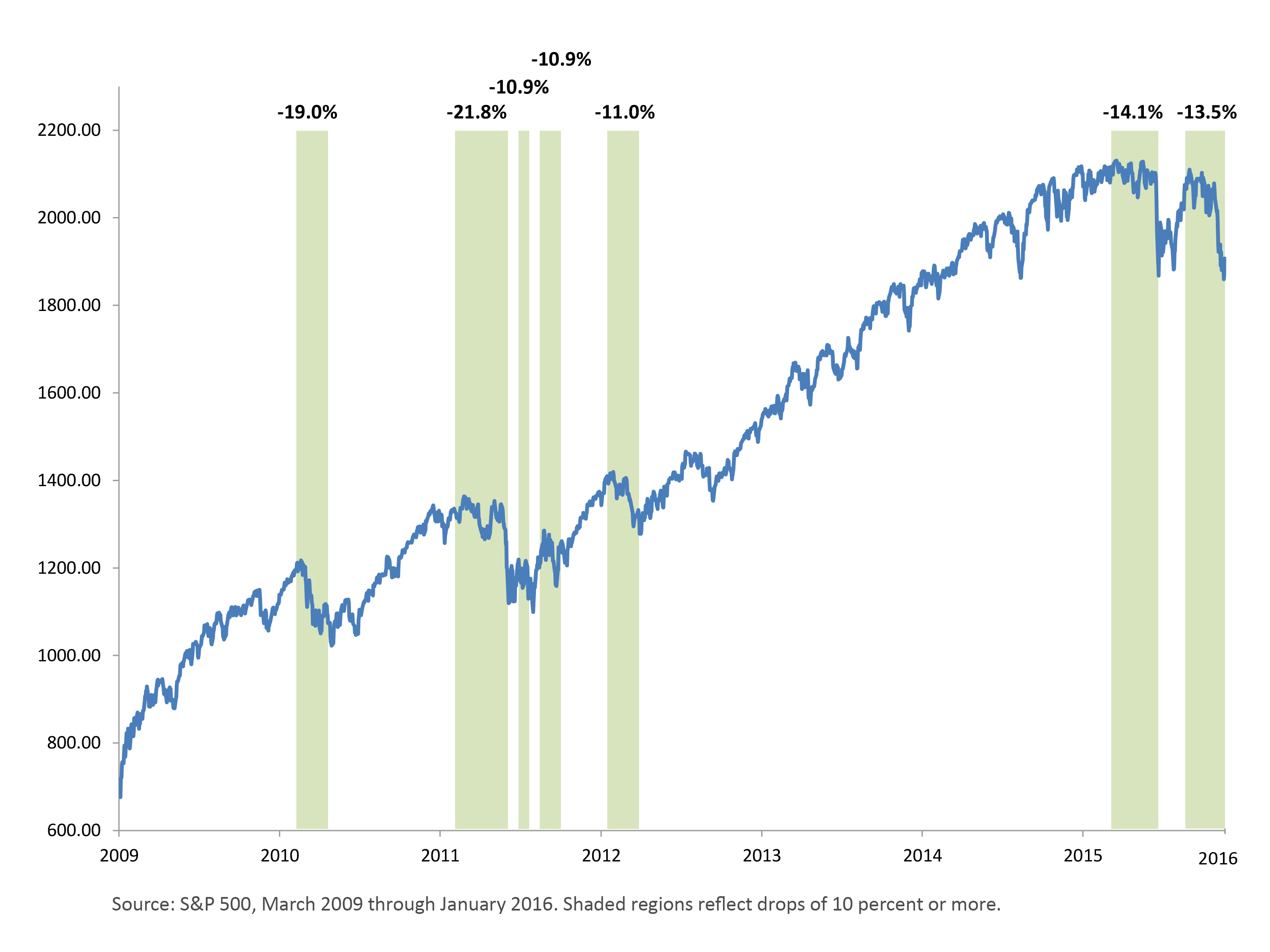In the past few weeks, stock markets around the world have fallen 10% or more. Confronted with declining portfolio values, some investors can lose perspective. We thought this would be a good time to share historical data we believe helps put recent events in a more objective light.
Since the lows of March 2009, stocks in the U.S. have appreciated more than 200%. International stocks of emerging and developed economies are up 180% and 100%, respectively. That’s a pretty good run.
Yet over the past 6+ years, U.S. stocks have fallen by 10% or more on seven occasions. Similar declines in international markets have occurred 10 times, and 15 times in emerging markets. The message? Swift, albeit temporary, downturns are part of investing. The challenge we face as investors is remembering this important lesson when our view of the future becomes clouded by the pain of the recent past. When stocks decline, we are tempted to “do something,” often wishing we were more conservative with our portfolio mix.
The challenge we face as investors is remembering this important lesson when our view of the future becomes clouded by the pain of the recent past. When stocks decline, we are tempted to “do something,” often wishing we were more conservative with our portfolio mix.
During these times, it’s easy to forget the important role stocks play in a portfolio—to provide long-term growth to help us meet future spending needs. The price we pay for this long-term growth, naturally, is having to put up with occasional bouts of volatility and negative returns.
While falling stock prices can cause some investors to turn cautious, sensible investors actually become more optimistic. Why? To help understand, forget about stocks for the moment. Think of bonds.
The prices of bonds and their yields move in opposite directions. As prices fall, yields rise, and vice versa. Because the lion’s share of a bond’s return comes from its yield, there is a clear benefit to falling prices: yields go up, which means future returns are likely to be better. Even the investor who has no new money to invest in bonds can take advantage of new, higher yields by reinvesting a bond’s coupon payments. So while falling bond prices hurt in the short-term, they increase long-term future returns.
Through this lens, then, declining prices should actually make us more, not less, enthused about stocks. New cash can be added to invest at lower prices, dividends can be reinvested or—if prices fall far enough—portfolios can be rebalanced. Rebalancing both restores the target asset mix while adhering to the investment ideal of “buy low, sell high.”
It is important to remember, we design portfolios precisely with times like this in mind. Did we know the exact cause or timing? Of course not. But a prudent, well-crafted investment plan incorporates, before a dime is ever invested, the inevitability of such market turbulence.
The reasons investors panic will change (China and The Fed may be the culprits today), but the principles of sound investing remain the same: stay invested, stay diversified, and stay disciplined.
